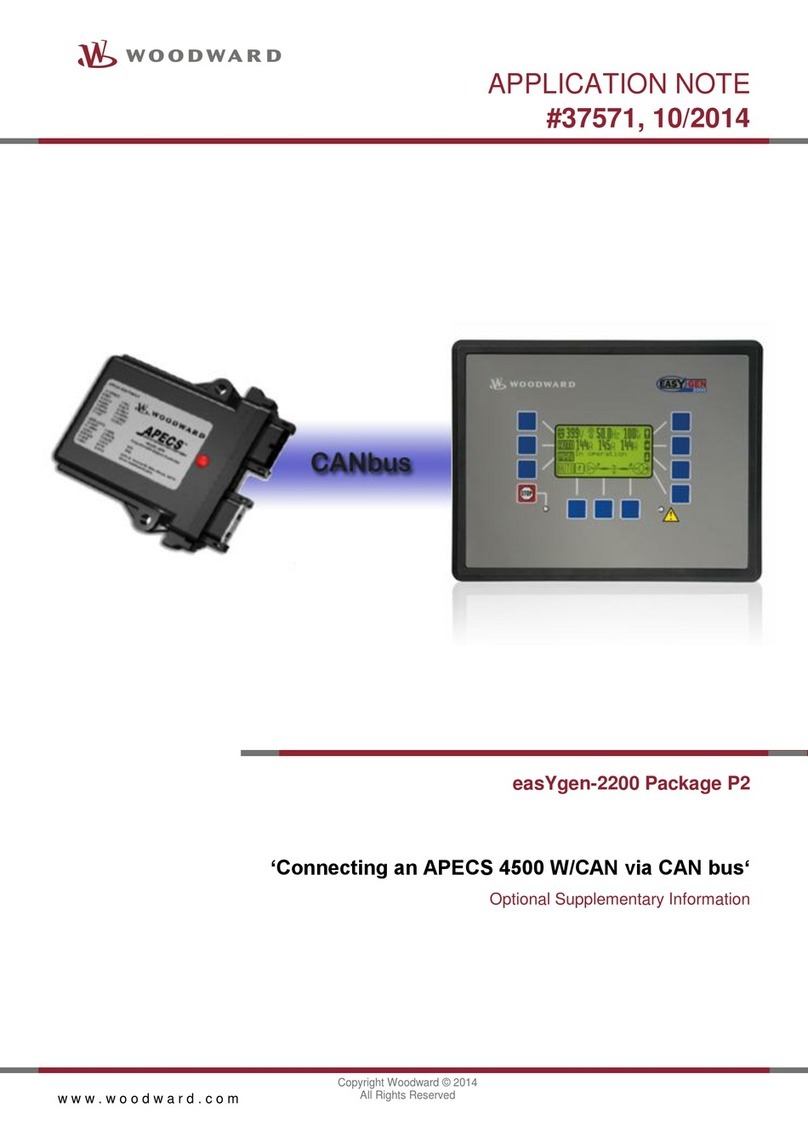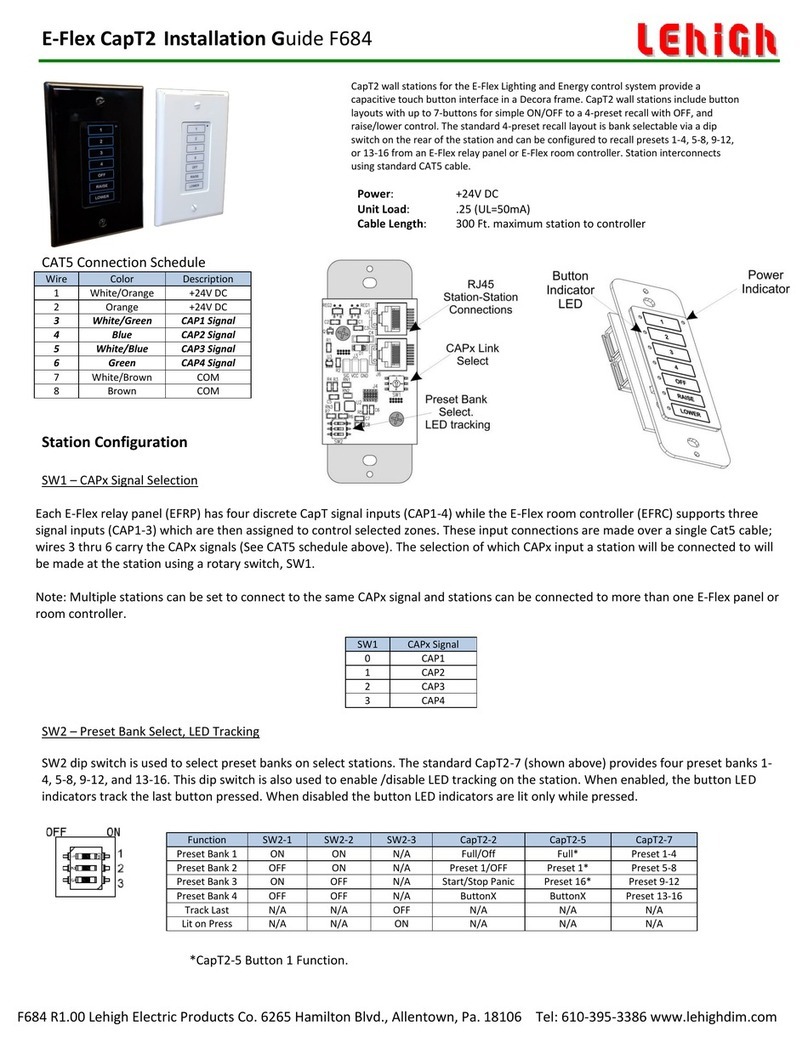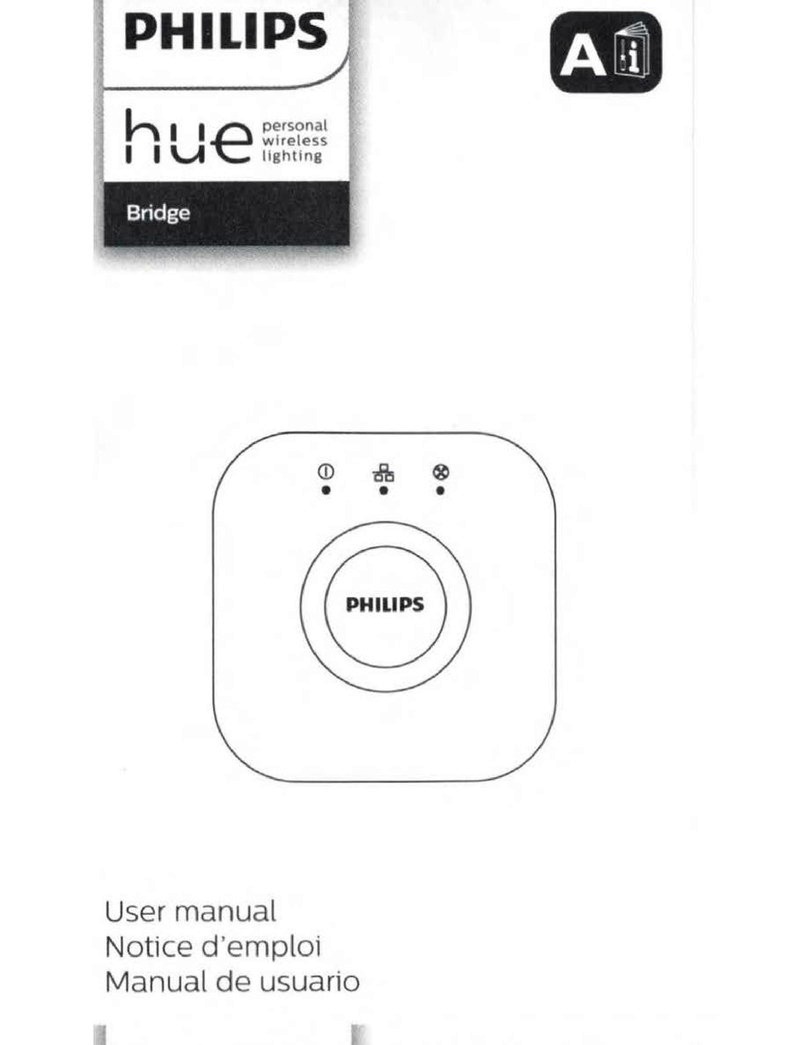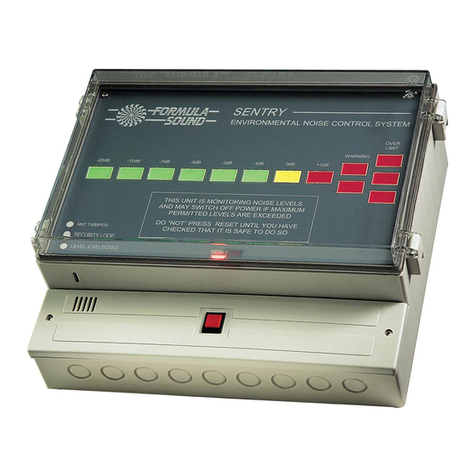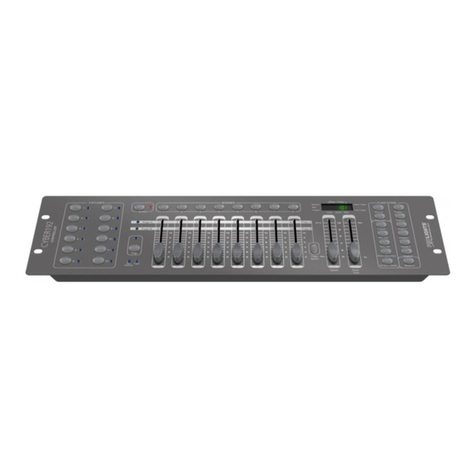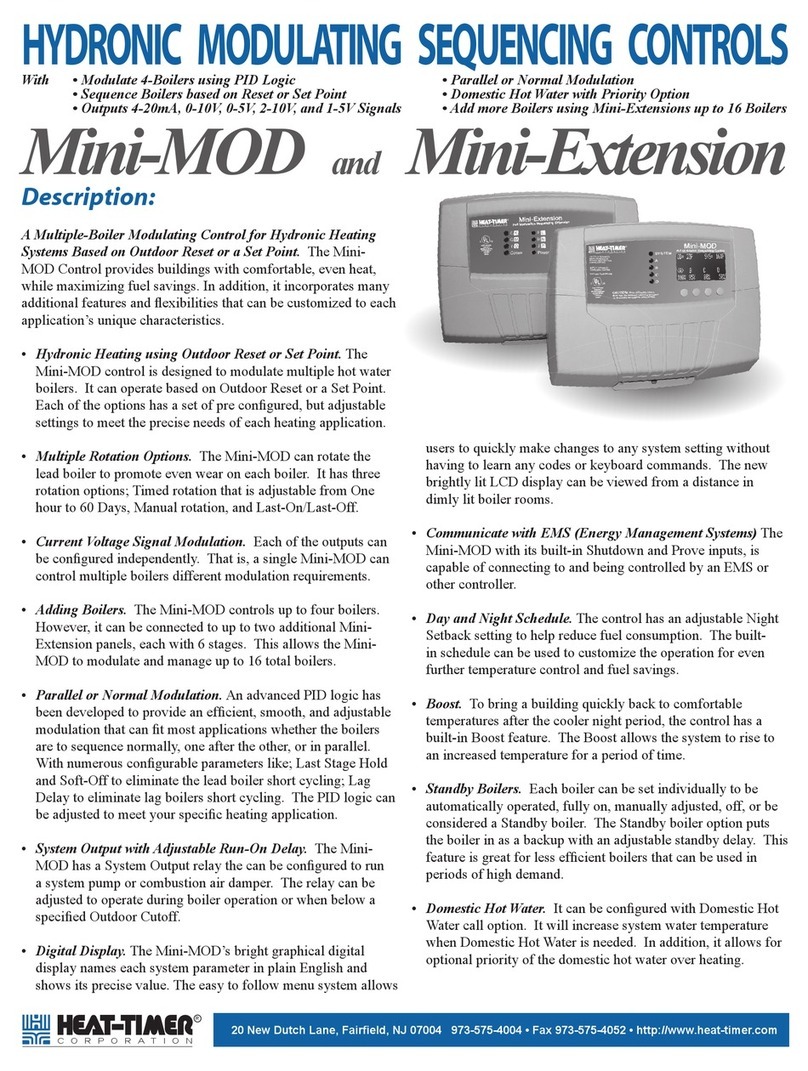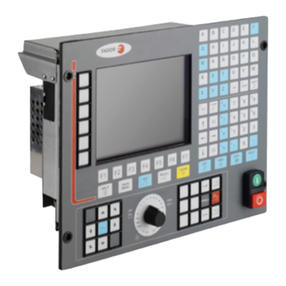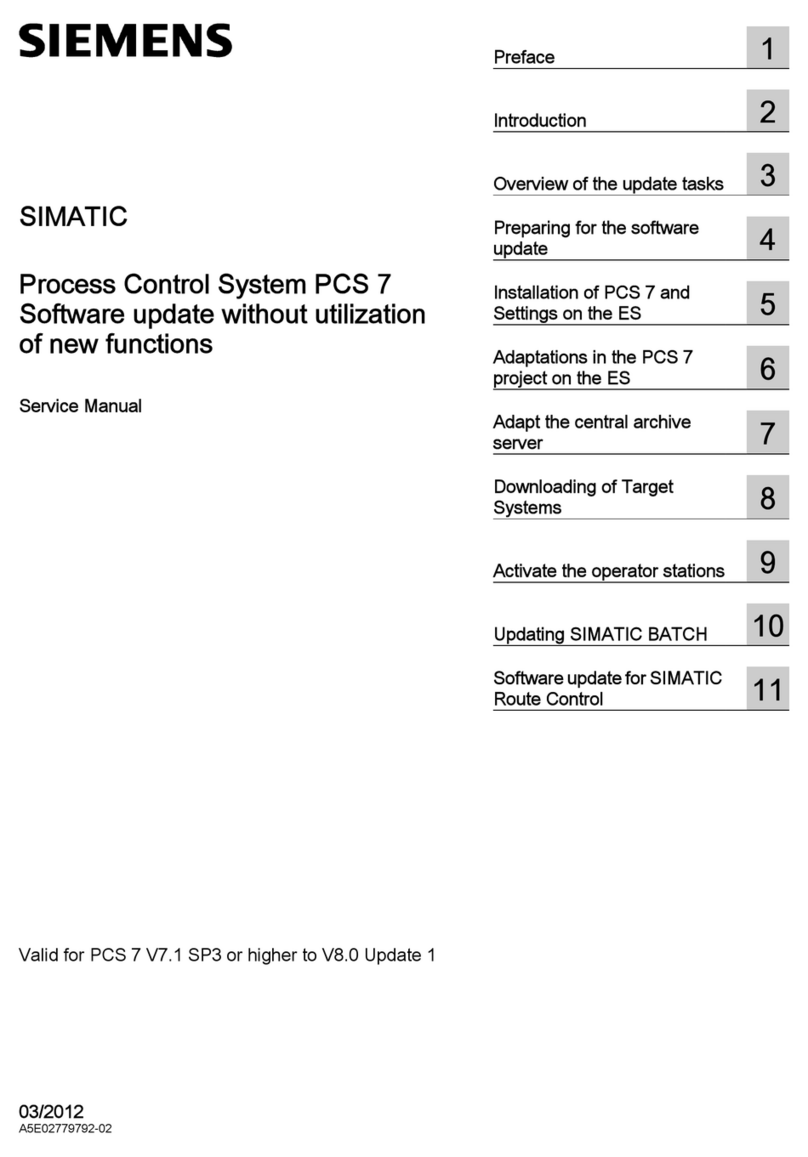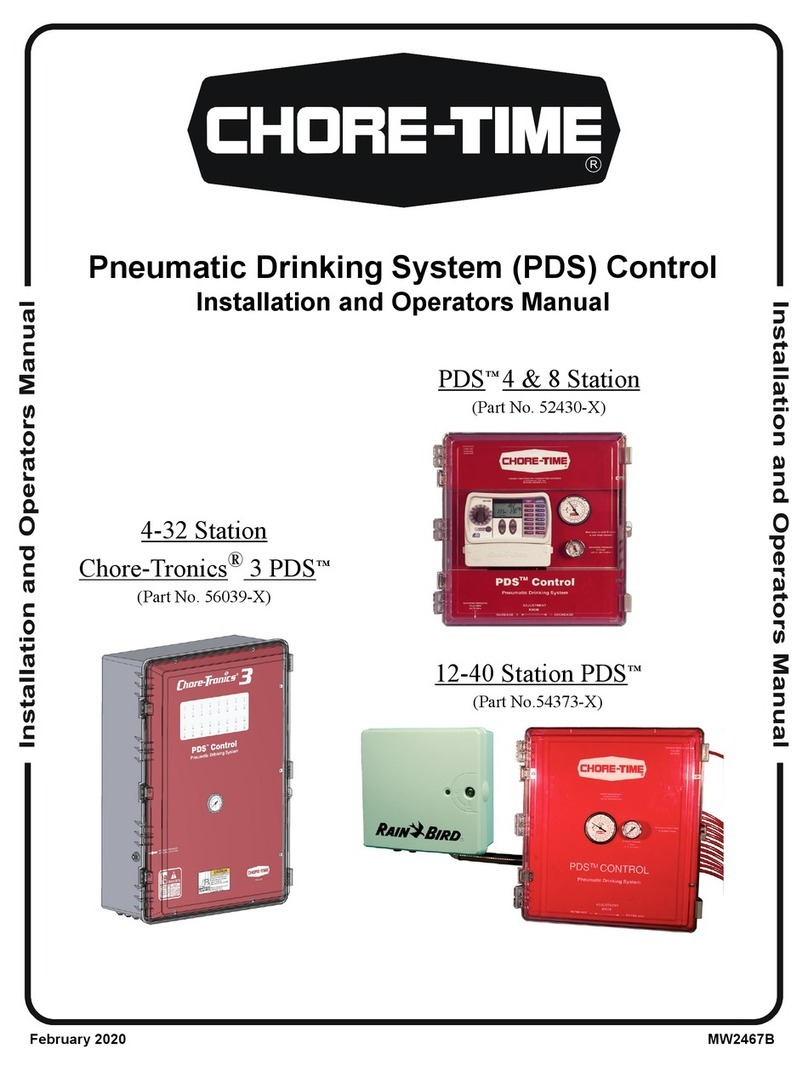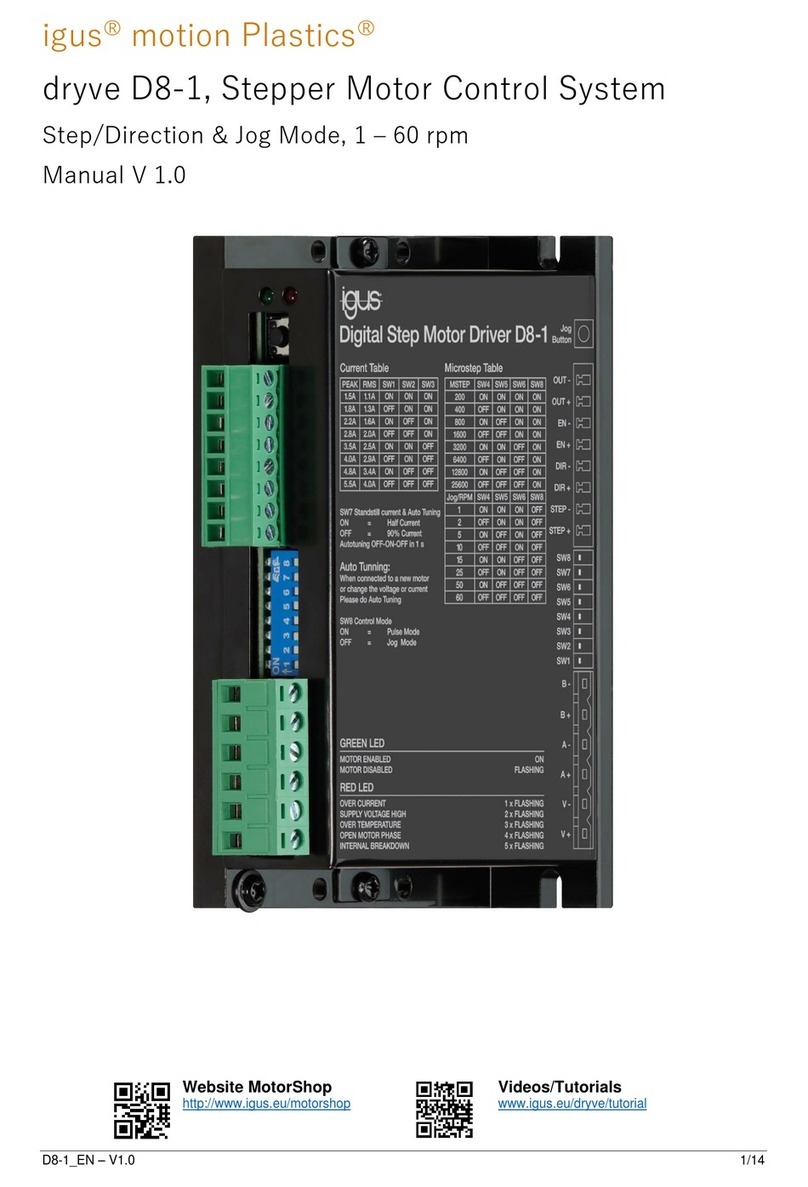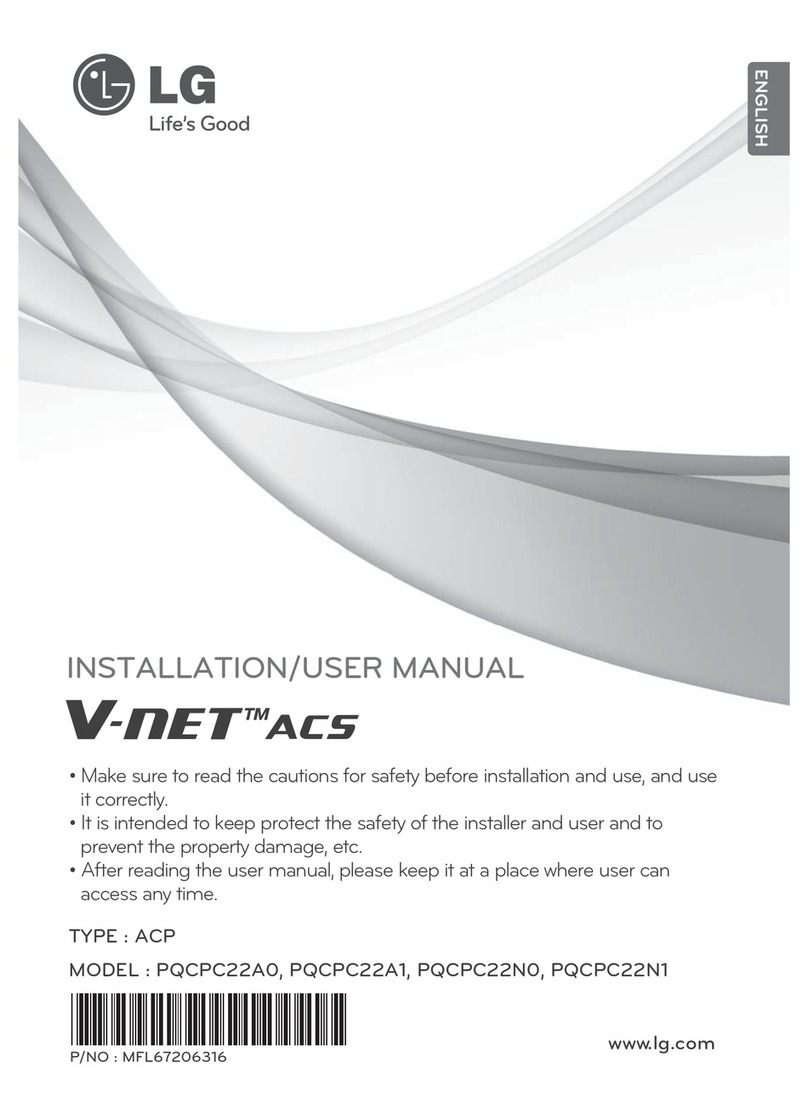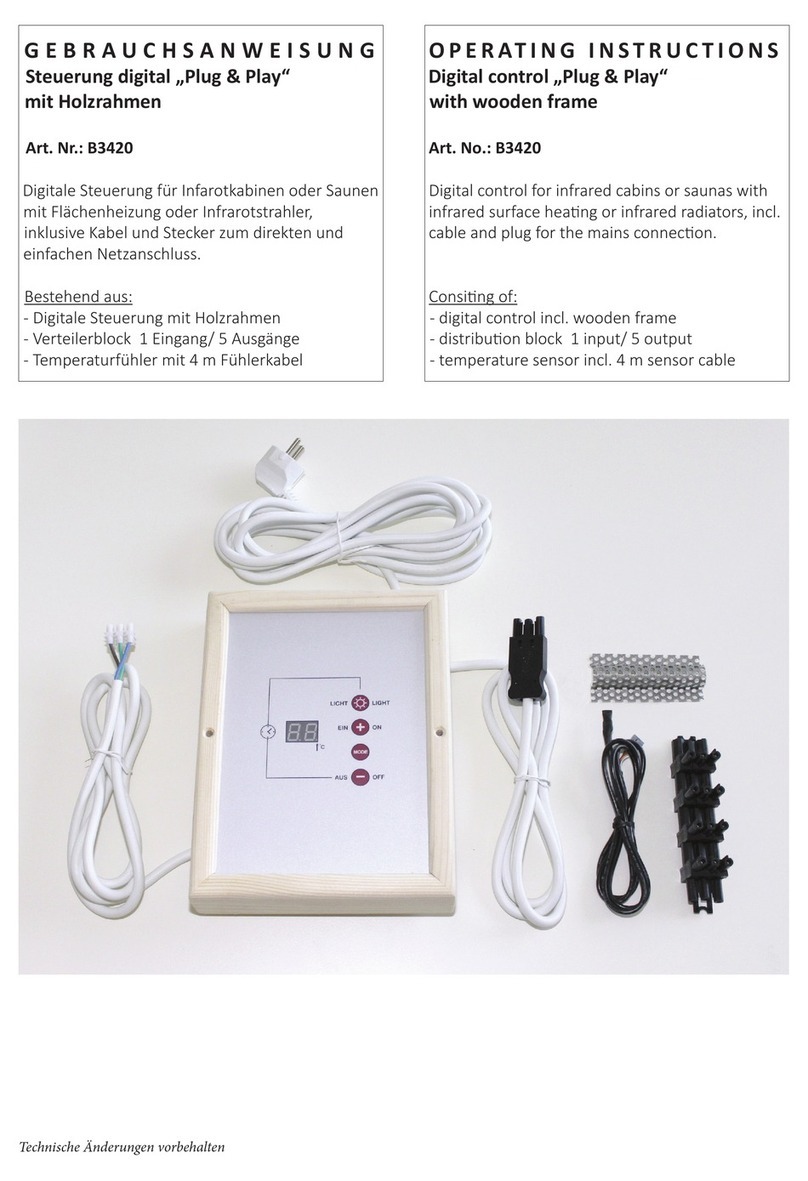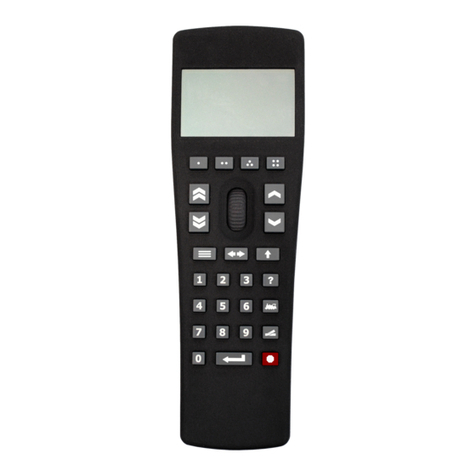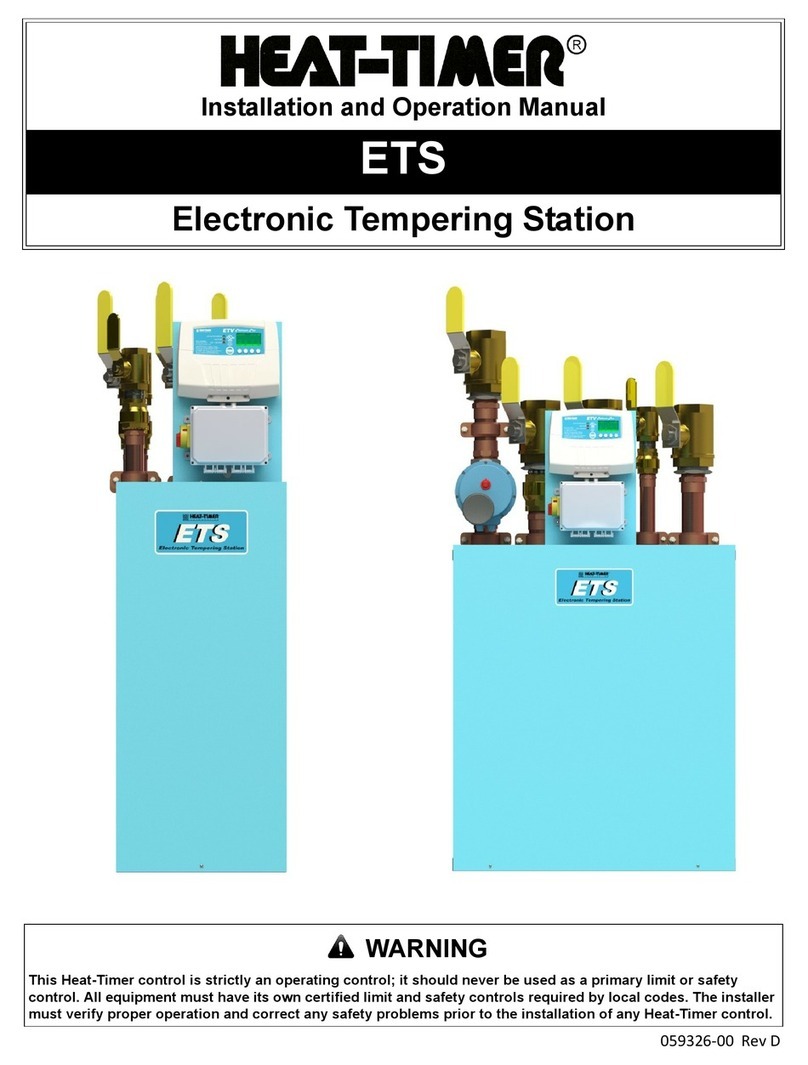Huawei LUNA2000-100KTL-M1 User manual

LUNA2000-100KTL-M1 Smart Power Control
System
User Manual
Issue 02
Date 2023-01-10
HUAWEI TECHNOLOGIES CO., LTD.

Copyright © Huawei Technologies Co., Ltd. 2023. All rights reserved.
No part of this document may be reproduced or transmitted in any form or by any means without prior
written consent of Huawei Technologies Co., Ltd.
Trademarks and Permissions
and other Huawei trademarks are trademarks of Huawei Technologies Co., Ltd.
All other trademarks and trade names mentioned in this document are the property of their respective
holders.
Notice
The purchased products, services and features are stipulated by the contract made between Huawei and
the customer. All or part of the products, services and features described in this document may not be
within the purchase scope or the usage scope. Unless otherwise specied in the contract, all statements,
information, and recommendations in this document are provided "AS IS" without warranties, guarantees
or representations of any kind, either express or implied.
The information in this document is subject to change without notice. Every eort has been made in the
preparation of this document to ensure accuracy of the contents, but all statements, information, and
recommendations in this document do not constitute a warranty of any kind, express or implied.
Huawei Technologies Co., Ltd.
Address: Huawei Industrial Base
Bantian, Longgang
Shenzhen 518129
People's Republic of China
Website: https://e.huawei.com
Issue 02 (2023-01-10) Copyright © Huawei Technologies Co., Ltd. i

About This Document
Purpose
This document describes the installation, electrical connections, commissioning,
maintenance, and troubleshooting of the LUNA2000-100KTL-M1 Smart Power
Control System (also referred to as Smart PCS). Before installing and operating the
Smart PCS, ensure that you are familiar with the features, functions, and safety
precautions provided in this document.
Intended Audience
This document is applicable to:
● Installers
● Users
Symbol Conventions
The symbols that may be found in this document are dened as follows.
Symbol Description
Indicates a hazard with a high level of risk which, if not avoided,
will result in death or serious injury.
Indicates a hazard with a medium level of risk which, if not
avoided, could result in death or serious injury.
Indicates a hazard with a low level of risk which, if not avoided,
could result in minor or moderate injury.
Indicates a potentially hazardous situation which, if not avoided,
could result in equipment damage, data loss, performance
deterioration, or unanticipated results.
NOTICE is used to address practices not related to personal injury.
Supplements the important information in the main text.
NOTE is used to address information not related to personal
injury, equipment damage, and environment deterioration.
LUNA2000-100KTL-M1 Smart Power Control System
User Manual About This Document
Issue 02 (2023-01-10) Copyright © Huawei Technologies Co., Ltd. ii

Change History
Changes between document issues are cumulative. The latest document issue
contains all updates made in previous issues.
Issue 02 (2023-01-10)
Updated 1 Safety Information.
Updated 4.3 Pre-installation Checks.
Updated 5.1 Precautions.
Updated 5.7 Connecting AC Power Cables.
Updated 6.2 Powering On the Smart PCS.
Added 6.5 Setting Parameters.
Updated 7 Device Maintenance.
Updated 7.4 Replacing the Smart PCS.
Updated B Grid Codes.
Issue 01 (2022-11-10)
This issue is used for rst oce application (FOA).
LUNA2000-100KTL-M1 Smart Power Control System
User Manual About This Document
Issue 02 (2023-01-10) Copyright © Huawei Technologies Co., Ltd. iii

Contents
About This Document................................................................................................................ ii
1 Safety Information.................................................................................................................. 1
1.1 Personal Safety.........................................................................................................................................................................2
1.2 Electrical Safety........................................................................................................................................................................4
1.3 Environment Requirements................................................................................................................................................. 7
1.4 Mechanical Safety................................................................................................................................................................... 8
2 Product Overview..................................................................................................................13
2.1 Model........................................................................................................................................................................................ 13
2.2 Functions and Features....................................................................................................................................................... 14
2.3 Appearance............................................................................................................................................................................. 15
2.4 Working Principle..................................................................................................................................................................17
2.4.1 Circuit Diagram.................................................................................................................................................................. 17
2.4.2 Working Modes.................................................................................................................................................................. 18
2.5 Typical Application Scenario............................................................................................................................................. 19
3 Storage.....................................................................................................................................22
4 Installation..............................................................................................................................23
4.1 Environment Requirements............................................................................................................................................... 23
4.2 Preparing Tools...................................................................................................................................................................... 25
4.3 Pre-installation Checks........................................................................................................................................................27
4.4 Moving the Smart PCS........................................................................................................................................................ 28
4.5 Installing the Smart PCS.....................................................................................................................................................30
5 Electrical Connections.......................................................................................................... 33
5.1 Precautions.............................................................................................................................................................................. 33
5.2 Preparing Cables................................................................................................................................................................... 34
5.3 Connecting the Ground Cable.......................................................................................................................................... 35
5.4 Opening the Maintenance Compartment Doors....................................................................................................... 36
5.4.1 Opening the DC Maintenance Compartment Door.............................................................................................. 36
5.4.2 Opening the AC Maintenance Compartment Door...............................................................................................37
5.5 Replacing the Crimping Module...................................................................................................................................... 38
5.6 Connecting the DC Power Cable..................................................................................................................................... 39
5.7 Connecting AC Power Cables............................................................................................................................................40
LUNA2000-100KTL-M1 Smart Power Control System
User Manual Contents
Issue 02 (2023-01-10) Copyright © Huawei Technologies Co., Ltd. iv

5.8 Connecting FE Communications Cables........................................................................................................................43
5.9 Closing Maintenance Compartment Doors................................................................................................................. 46
5.9.1 Closing the DC Maintenance Compartment Door................................................................................................. 46
5.9.2 Closing the AC Maintenance Compartment Door................................................................................................. 47
6 Power-On Commissioning................................................................................................... 48
6.1 Checking Before Power-On................................................................................................................................................50
6.2 Powering On the Smart PCS............................................................................................................................................. 51
6.3 Downloading the App......................................................................................................................................................... 51
6.4 App Commissioning............................................................................................................................................................. 53
6.5 Setting Parameters............................................................................................................................................................... 55
6.5.1 Setting Grid Parameters.................................................................................................................................................. 55
6.5.2 Setting Protection Parameters...................................................................................................................................... 57
6.5.3 Setting Feature Parameters........................................................................................................................................... 59
6.5.4 Setting Power Adjustment Parameters...................................................................................................................... 69
7 Device Maintenance............................................................................................................. 72
7.1 Routine Maintenance.......................................................................................................................................................... 72
7.2 Powering O the Smart PCS.............................................................................................................................................74
7.3 Replacing a Fan..................................................................................................................................................................... 76
7.4 Replacing the Smart PCS....................................................................................................................................................80
7.5 Disposing of the Smart PCS.............................................................................................................................................. 84
8 Alarm Reference.................................................................................................................... 85
9 Technical Data........................................................................................................................96
A Crimping an OT or DT Terminal........................................................................................ 99
B Grid Codes.............................................................................................................................102
C Resetting Password............................................................................................................ 104
D Certicate Management and Maintenance................................................................. 105
E Contact Information........................................................................................................... 106
F Acronyms and Abbreviations............................................................................................108
LUNA2000-100KTL-M1 Smart Power Control System
User Manual Contents
Issue 02 (2023-01-10) Copyright © Huawei Technologies Co., Ltd. v

1 Safety Information
Statement
Before transporting, storing, installing, operating, using, and/or maintaining the
equipment, read this document, strictly follow the instructions provided herein,
and follow all the safety instructions on the equipment and in this document. In
this document, "equipment" refers to the products, software, components, spare
parts, and/or services related to this document; "the Company" refers to the
manufacturer (producer), seller, and/or service provider of the equipment; "you"
refers to the entity that transports, stores, installs, operates, uses, and/or
maintains the equipment.
The Danger, Warning, Caution, and Notice statements described in this
document do not cover all the safety precautions. You also need to comply with
relevant international, national, or regional standards and industry practices. The
Company shall not be liable for any consequences that may arise due to
violations of safety requirements or safety standards concerning the design,
production, and usage of the equipment.
The equipment should be used in an environment that meets the design
specications. Otherwise, the equipment may be faulty, malfunctioning, or
damaged, which is not covered under the warranty. The Company shall not be
liable for any property loss, personal injury, or even death caused thereby.
Comply with applicable laws, regulations, standards, and specications during
transportation, storage, installation, operation, use, and maintenance.
Do not perform reverse engineering, decompilation, disassembly, adaptation,
implantation, or other derivative operations on the equipment software. Do not
study the internal implementation logic of the equipment, obtain the source code
of the equipment software, violate intellectual property rights, or disclose any of
the performance test results of the equipment software.
The Company shall not be liable for any of the following circumstances or
their consequences:
● The equipment is damaged due to force majeure such as earthquakes, oods,
volcanic eruptions, debris ows, lightning strikes, res, wars, armed conicts,
typhoons, hurricanes, tornadoes, and other extreme weather conditions.
● The equipment is operated beyond the conditions specied in this document.
LUNA2000-100KTL-M1 Smart Power Control System
User Manual 1 Safety Information
Issue 02 (2023-01-10) Copyright © Huawei Technologies Co., Ltd. 1

● The equipment is installed or used in environments that do not comply with
international, national, or regional standards.
● You fail to follow the operation instructions and safety precautions on the
product and in the document.
● You remove or modify the product or modify the software code without
authorization.
● You or a third party authorized by you cause the equipment damage during
transportation.
● The equipment is damaged due to storage conditions that do not meet the
requirements specied in the product document.
● You fail to prepare materials and tools that comply with local laws,
regulations, and related standards.
● The equipment is damaged due to your or a third party's negligence,
intentional breach, gross negligence, or improper operations, or other reasons
not related to the Company.
1.1 Personal Safety
D ANGER
Ensure that power is o during installation. Do not install or remove a cable with
power on. Transient contact between the core of the cable and the conductor will
generate electric arcs or sparks, which may cause a re or personal injury.
D ANGER
Non-standard and improper operations on the energized equipment may cause
re, electric shocks, or explosion, resulting in property damage, personal injury, or
even death.
D ANGER
Before operations, remove conductive objects such as watches, bracelets, bangles,
rings, and necklaces to prevent electric shocks.
D ANGER
During operations, use dedicated insulated tools to prevent electric shocks or short
circuits. The dielectric withstanding voltage level must comply with local laws,
regulations, standards, and specications.
LUNA2000-100KTL-M1 Smart Power Control System
User Manual 1 Safety Information
Issue 02 (2023-01-10) Copyright © Huawei Technologies Co., Ltd. 2

WARNING
During operations, wear personal protective equipment such as protective
clothing, insulated shoes, goggles, safety helmets, and insulated gloves.
Figure 1-1 Personal protective equipment
General Requirements
● Do not stop protective devices. Pay attention to the warnings, cautions, and
related precautionary measures in this document and on the equipment.
● If there is a likelihood of personal injury or equipment damage during
operations, immediately stop, report the case to the supervisor, and take
feasible protective measures.
● Do not power on the equipment before it is installed or conrmed by
professionals.
● Do not touch the power supply equipment directly or with conductors such as
damp objects. Before touching any conductor surface or terminal, measure
the voltage at the contact point to ensure that there is no risk of electric
shock.
● Do not touch operating equipment because the enclosure is hot.
● Do not touch a running fan with your hands, components, screws, tools, or
boards. Otherwise, personal injury or equipment damage may occur.
● In the case of a re, immediately leave the building or the equipment area
and activate the re alarm or call emergency services. Do not enter the
aected building or equipment area under any circumstances.
Personnel Requirements
● Only professionals and trained personnel are allowed to operate the
equipment.
– Professionals: personnel who are familiar with the working principles and
structure of the equipment, trained or experienced in equipment
operations and are clear of the sources and degree of various potential
hazards in equipment installation, operation, maintenance
LUNA2000-100KTL-M1 Smart Power Control System
User Manual 1 Safety Information
Issue 02 (2023-01-10) Copyright © Huawei Technologies Co., Ltd. 3

– Trained personnel: personnel who are trained in technology and safety,
have required experience, are aware of possible hazards on themselves in
certain operations, and are able to take protective measures to minimize
the hazards on themselves and other people
● Personnel who plan to install or maintain the equipment must receive
adequate training, be able to correctly perform all operations, and understand
all necessary safety precautions and local relevant standards.
● Only qualied professionals or trained personnel are allowed to install,
operate, and maintain the equipment.
● Only qualied professionals are allowed to remove safety facilities and inspect
the equipment.
● Personnel who will perform special tasks such as electrical operations,
working at heights, and operations of special equipment should possess the
required local qualications.
● Only authorized professionals are allowed to replace the equipment or
components (including software).
● Only personnel who need to work on the equipment are allowed to access
the equipment.
1.2 Electrical Safety
D ANGER
Before connecting cables, ensure that the equipment is intact. Otherwise, electric
shocks or re may occur.
D ANGER
Non-standard and improper operations may result in re or electric shocks.
D ANGER
Prevent foreign matter from entering the equipment during operations. Otherwise,
equipment damage, load power derating, power failure, or personal injury may
occur.
WARNING
For the equipment that needs to be grounded, install the ground cable rst when
installing the equipment and remove the ground cable last when removing the
equipment.
LUNA2000-100KTL-M1 Smart Power Control System
User Manual 1 Safety Information
Issue 02 (2023-01-10) Copyright © Huawei Technologies Co., Ltd. 4

CA UTION
Do not route cables behind the air intake and exhaust vents of the equipment.
General Requirements
● Follow the procedures described in the document for installation, operation,
and maintenance. Do not reconstruct or alter the equipment, add
components, or change the installation sequence without permission.
● Obtain approval from the national or local electric utility company before
connecting the equipment to the grid.
● Observe the power plant safety regulations, such as the operation and work
ticket mechanisms.
● Install temporary fences or warning ropes and hang "No Entry" signs around
the operation area to keep unauthorized personnel away from the area.
● Before installing or removing power cables, turn o the switches of the
equipment and its upstream and downstream switches.
● Before performing operations on the equipment, check that all tools meet the
requirements and record the tools. After the operations are complete, collect
all of the tools to prevent them from being left inside the equipment.
● Before installing power cables, check that cable labels are correct and cable
terminals are insulated.
● When installing the equipment, use a torque tool of a proper measurement
range to tighten the screws. When using a wrench to tighten the screws,
ensure that the wrench does not tilt and the torque error does not exceed
10% of the specied value.
● Ensure that bolts are tightened with a torque tool and marked in red and blue
after double-check. Installation personnel mark tightened bolts in blue.
Quality inspection personnel conrm that the bolts are tightened and then
mark them in red. (The marks should cross the edges of the bolts.)
● If the equipment has multiple inputs, disconnect all the inputs before
operating the equipment.
● Before maintaining a downstream electrical device supply or power
distribution device, turn o the output switch of its power supply equipment.
● During equipment maintenance, attach "Do not switch on" labels near the
upstream and downstream switches or circuit breakers as well as warning
signs to prevent accidental connection. The equipment can be powered on
only after troubleshooting is complete.
● Do not open equipment panels.
● Check equipment connections periodically, ensuring that all screws are
securely tightened.
● Only qualied professionals can replace a damaged cable.
● Do not scrawl, damage, or block any labels or nameplates on the equipment.
Promptly replace labels that have worn out.
LUNA2000-100KTL-M1 Smart Power Control System
User Manual 1 Safety Information
Issue 02 (2023-01-10) Copyright © Huawei Technologies Co., Ltd. 5

● Do not use solvents such as water, alcohol, or oil to clean electrical
components inside or outside of the equipment.
Grounding
● Ensure that the grounding impedance of the equipment complies with local
electrical standards.
● Ensure that the equipment is connected permanently to the protective
ground. Before operating the equipment, check its electrical connection to
ensure that it is reliably grounded.
● Do not work on the equipment in the absence of a properly installed ground
conductor.
● Do not damage the ground conductor.
Cabling Requirements
● When selecting, installing, and routing cables, follow local safety regulations
and rules.
● When routing power cables, ensure that there is no coiling or twisting. Do not
join or weld power cables. If necessary, use a longer cable.
● Ensure that all cables are properly connected and insulated, and meet
specications.
● Ensure that the slots and holes for routing cables are free from sharp edges,
and that the positions where cables are routed through pipes or cable holes
are equipped with cushion materials to prevent the cables from being
damaged by sharp edges or burrs.
● Ensure that cables of the same type are bound together neatly and straight
and that the cable sheath is intact. When routing cables of dierent types,
ensure that they are away from each other without entanglement and
overlapping.
● Secure buried cables using cable supports and cable clips. Ensure that the
cables in the backll area are in close contact with the ground to prevent
cable deformation or damage during backlling.
● If the external conditions (such as the cable layout or ambient temperature)
change, verify the cable usage in accordance with the IEC-60364-5-52 or local
laws and regulations. For example, check that the current-carrying capacity
meets requirements.
● When routing cables, reserve at least 30 mm clearance between the cables
and heat-generating components or areas. This prevents deterioration or
damage to the cable insulation layer.
● When the temperature is low, violent impact or vibration may damage the
plastic cable sheathing. To ensure safety, comply with the following
requirements:
– Cables can be laid or installed only when the temperature is higher than
0°C. Handle cables with caution, especially at a low temperature.
– Cables stored at subzero temperatures must be stored at room
temperature for at least 24 hours before they are laid out.
● Do not perform any improper operations, for example, dropping cables
directly from a vehicle. Otherwise, the cable performance may deteriorate due
LUNA2000-100KTL-M1 Smart Power Control System
User Manual 1 Safety Information
Issue 02 (2023-01-10) Copyright © Huawei Technologies Co., Ltd. 6

to cable damage, which aects the current-carrying capacity and temperature
rise.
1.3 Environment Requirements
D ANGER
Do not expose the equipment to ammable or explosive gas or smoke. Do not
perform any operation on the equipment in such environments.
D ANGER
Do not store any ammable or explosive materials in the equipment area.
D ANGER
Do not place the equipment near heat sources or re sources, such as smoke,
candles, heaters, or other heating devices. Overheat may damage the equipment
or cause a re.
WARNING
Install the equipment in an area far away from liquids. Do not install it under
areas prone to condensation, such as under water pipes and air exhaust vents, or
areas prone to water leakage, such as air conditioner vents, ventilation vents, or
feeder windows of the equipment room. Ensure that no liquid enters the
equipment to prevent faults or short circuits.
WARNING
To prevent damage or re due to high temperature, ensure that the ventilation
vents or heat dissipation systems are not obstructed or covered by other objects
while the equipment is running.
General Requirements
● Ensure that the equipment is stored in a clean, dry, and well ventilated area
with proper temperature and humidity and is protected from dust and
condensation.
● Do not install or run the equipment beyond the technical specications.
Otherwise, its performance and safety will be compromised.
● Do not install, use, or operate outdoor equipment and cables (including but
not limited to moving equipment, operating equipment and cables, inserting
LUNA2000-100KTL-M1 Smart Power Control System
User Manual 1 Safety Information
Issue 02 (2023-01-10) Copyright © Huawei Technologies Co., Ltd. 7

connectors to or removing connectors from signal ports connected to outdoor
facilities, working at heights, performing outdoor installation, and opening
doors) in harsh weather conditions such as lightning, rain, snow, and level 6
or stronger wind.
● Do not install the equipment in an environment with dust, smoke, volatile or
corrosive gases, infrared and other radiations, organic solvents, or salty air.
● Do not install the equipment in an environment with conductive metal or
magnetic dust.
● Do not install the equipment in an area conducive for the growth of
microorganisms such as fungus or mildew.
● Do not install the equipment in an area with strong vibration, noise, or
electromagnetic interference.
● Ensure that the site complies with local laws, regulations, and related
standards.
● Ensure that the ground in the installation environment is solid, free from
spongy or soft soil, and not prone to subsidence. The site must not be located
in a low-lying land or an area prone to water accumulation, and the
horizontal level of the site must be above the highest water level of that area
in history.
● Do not install the equipment in a position that may be submerged in water.
● If the equipment is installed in a place with abundant vegetation, in addition
to routine weeding, harden the ground underneath the equipment using
cement or gravel (recommended area: 3 m x 2.5 m).
● Do not install the equipment outdoors in salt-aected areas because it may
be corroded. A salt-aected area refers to the region within 500 m of the
coast or prone to sea breeze. Regions prone to sea breeze vary with weather
conditions (such as typhoons and monsoons) or terrains (such as dams and
hills).
● Before opening doors during the installation, operation, and maintenance of
the equipment, clean up any water, ice, snow, or other foreign objects on the
top of the equipment to prevent foreign objects from falling into the
equipment.
● When installing the equipment, ensure that the installation surface is solid
enough to bear the weight of the equipment.
● After installing the equipment, remove the packing materials such as cartons,
foam, plastics, and cable ties from the equipment area.
1.4 Mechanical Safety
WARNING
Ensure that all necessary tools are ready and inspected by a professional
organization. Do not use tools that have signs of scratches or fail to pass the
inspection or whose inspection validity period has expired. Ensure that the tools
are secure and not overloaded.
LUNA2000-100KTL-M1 Smart Power Control System
User Manual 1 Safety Information
Issue 02 (2023-01-10) Copyright © Huawei Technologies Co., Ltd. 8

WARNING
Do not drill holes into the equipment. Doing so may aect the sealing
performance and electromagnetic containment of the equipment and damage
components or cables inside. Metal shavings from drilling may short-circuit boards
inside the equipment.
General Requirements
● Repaint any paint scratches caused during equipment transportation or
installation in a timely manner. Equipment with scratches cannot be exposed
for an extended period of time.
● Do not perform operations such as arc welding and cutting on the equipment
without evaluation by the Company.
● Do not install other devices on the top of the equipment without evaluation
by the Company.
● When performing operations over the top of the equipment, take measures to
protect the equipment against damage.
● Use correct tools and operate them in the correct way.
Moving Heavy Objects
● Be cautious to prevent injury when moving heavy objects.
● If multiple persons need to move a heavy object together, determine the
manpower and work division with consideration of height and other
conditions to ensure that the weight is equally distributed.
● If two persons or more move a heavy object together, ensure that the object
is lifted and landed simultaneously and moved at a uniform pace under the
supervision of one person.
● Wear personal protective gears such as protective gloves and shoes when
manually moving the equipment.
● To move an object by hand, approach to the object, squat down, and then lift
the object gently and stably by the force of the legs instead of your back. Do
not lift it suddenly or turn your body around.
● Do not quickly lift a heavy object above your waist. Place the object on a
workbench that is half-waist high or any other appropriate place, adjust the
positions of your palms, and then lift it.
● Move a heavy object stably with balanced force at an even and low speed. Put
down the object stably and slowly to prevent any collision or drop from
scratching the surface of the equipment or damaging the components and
cables.
LUNA2000-100KTL-M1 Smart Power Control System
User Manual 1 Safety Information
Issue 02 (2023-01-10) Copyright © Huawei Technologies Co., Ltd. 9

● When moving a heavy object, be aware of the workbench, slope, staircase,
and slippery places. When moving a heavy object through a door, ensure that
the door is wide enough to move the object and avoid bumping or injury.
● When transferring a heavy object, move your feet instead of turning your
waist around. When lifting and transferring a heavy object, ensure that your
feet point to the target direction of movement.
● When transporting the equipment using a pallet truck or forklift, ensure that
the tynes are properly positioned so that the equipment does not topple.
Before moving the equipment, secure it to the pallet truck or forklift using
ropes. When moving the equipment, assign dedicated personnel to take care
of it.
● Choose sea or roads in good conditions for transportation as transportation
by railway or air is not supported. Avoid tilt or jolt during transportation.
Using Ladders
● Use wooden or insulated ladders when you need to perform live-line working
at heights.
● Platform ladders with protective rails are preferred. Single ladders are not
recommended.
● Before using a ladder, check that it is intact and conrm its load bearing
capacity. Do not overload it.
● Ensure that the ladder is securely positioned and held rm.
● When climbing up the ladder, keep your body stable and your center of
gravity between the side rails, and do not overreach to the sides.
● When a step ladder is used, ensure that the pull ropes are secured.
● If a single ladder is used, the recommended angle for the ladder against the
oor is 75 degrees, as shown in the following gure. A square can be used to
measure the angle.
LUNA2000-100KTL-M1 Smart Power Control System
User Manual 1 Safety Information
Issue 02 (2023-01-10) Copyright © Huawei Technologies Co., Ltd. 10

● If a single ladder is used, ensure that the wider end of the ladder is at the
bottom, and take protective measures to prevent the ladder from sliding.
● If a single ladder is used, do not climb higher than the fourth rung of the
ladder from the top.
● If you use a single ladder to climb up to a platform, ensure that the ladder is
at least 1 m higher than the platform.
Hoisting
● Only trained and qualied personnel are allowed to perform hoisting
operations.
● Install temporary warning signs or fences to isolate the hoisting area.
● Ensure that the foundation where hoisting is performed on meets the load-
bearing requirements.
● Before hoisting objects, ensure that hoisting tools are rmly secured onto a
xed object or wall that meets the load-bearing requirements.
● During hoisting, do not stand or walk under the crane or the hoisted objects.
● Do not drag steel ropes and hoisting tools or bump the hoisted objects
against hard objects during hoisting.
● Ensure that the angle between two hoisting ropes is no more than 90
degrees, as shown in the following gure.
LUNA2000-100KTL-M1 Smart Power Control System
User Manual 1 Safety Information
Issue 02 (2023-01-10) Copyright © Huawei Technologies Co., Ltd. 11

Drilling Holes
● Obtain consent from the customer and contractor before drilling holes.
● Wear protective equipment such as safety goggles and protective gloves when
drilling holes.
● To avoid short circuits or other risks, do not drill holes into buried pipes or
cables.
● When drilling holes, protect the equipment from shavings. After drilling, clean
up any shavings.
LUNA2000-100KTL-M1 Smart Power Control System
User Manual 1 Safety Information
Issue 02 (2023-01-10) Copyright © Huawei Technologies Co., Ltd. 12

2 Product Overview
2.1 Model
Model Number
Figure 2-1 Model
Table 2-1 Model number description
No. Meaning Description
1 Product family
name
LUNA2000: Smart PCS
2 Power level 100K: The power level is 100 kW.
3 Topology TL: transformerless
4 Product code M1: product series using 1100 V DC voltage
Model Identication
You can obtain details of the device model from the model label on the external
package and the nameplate on the side of the enclosure.
LUNA2000-100KTL-M1 Smart Power Control System
User Manual 2 Product Overview
Issue 02 (2023-01-10) Copyright © Huawei Technologies Co., Ltd. 13

Figure 2-2 Position of the model label on the external package
(1) Position of the model label
2.2 Functions and Features
Functions
● The Smart PCS implements rectication and inversion through a three-phase
three-level converter.
● The rectied output is converted from three-phase AC power to DC power
and then stored in the energy storage system (ESS).
● The inverted output is ltered to three-phase AC power, which is then isolated
and boosted by a three-phase transformer and fed into the power grid.
Features
Intelligence
● Bi-directional and quadrant operation is available for both active and reactive
power.
● Modular design: Devices with dierent power levels can be exibly combined
based on customer requirements to facilitate deployment.
● Smart air cooling: The fan speed can be adjusted based on the ambient
temperature and load to maximize the service life of fans and minimize
maintenance needs.
● Short-term overload at 120%.
Safety
● DC bus short circuit protection: quick and safe power o in case of a DC bus
short circuit.
● Embedded DC and AC surge protection devices (SPDs): all-round surge
protection.
● Embedded residual current monitoring unit: immediately disconnects the
Smart PCS from the power grid upon detecting that the residual current
exceeds the threshold.
Power Grid Type
The Smart PCS supports IT power grids.
LUNA2000-100KTL-M1 Smart Power Control System
User Manual 2 Product Overview
Issue 02 (2023-01-10) Copyright © Huawei Technologies Co., Ltd. 14
Other manuals for LUNA2000-100KTL-M1
1
Table of contents
Other Huawei Control System manuals



